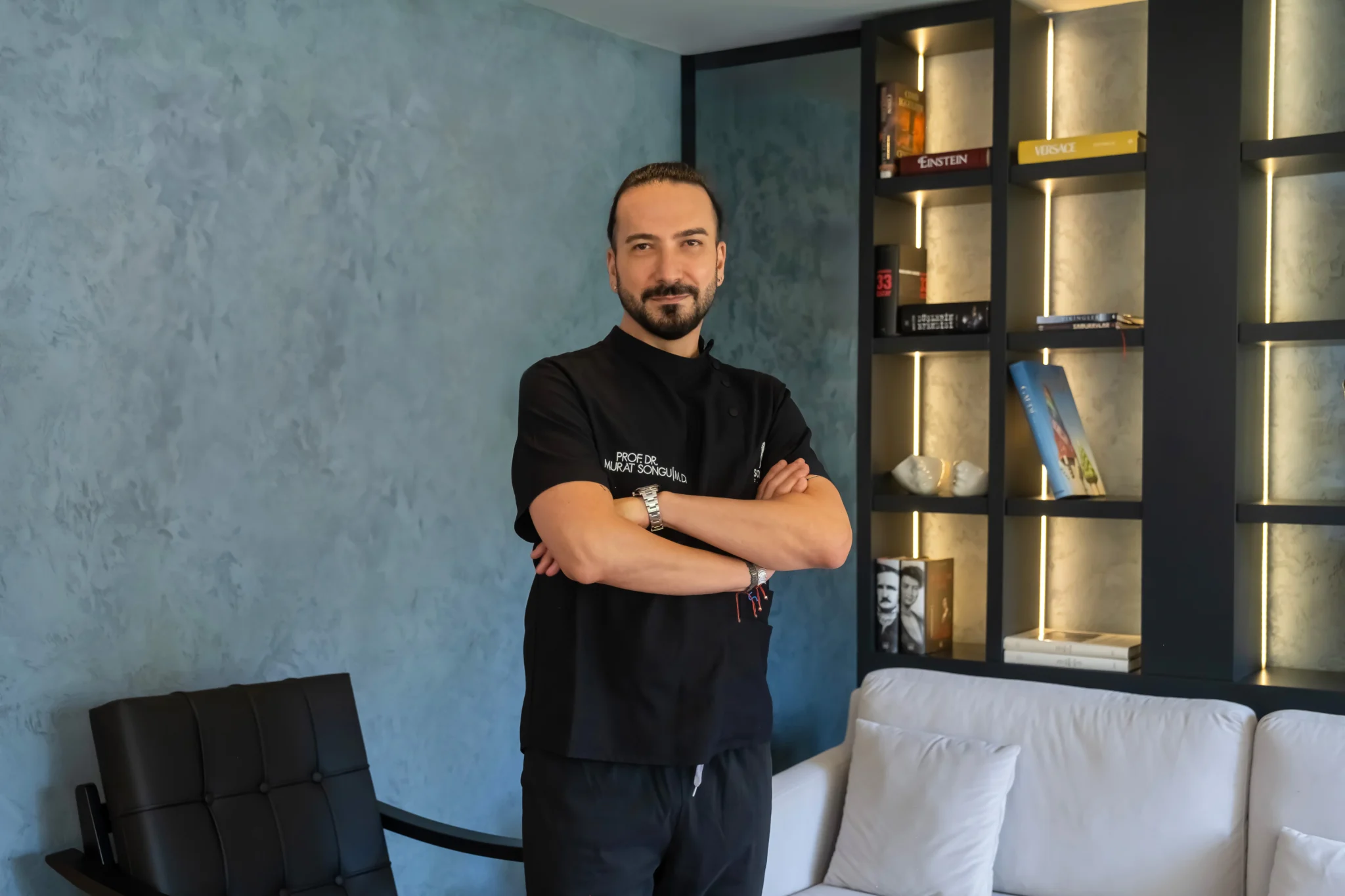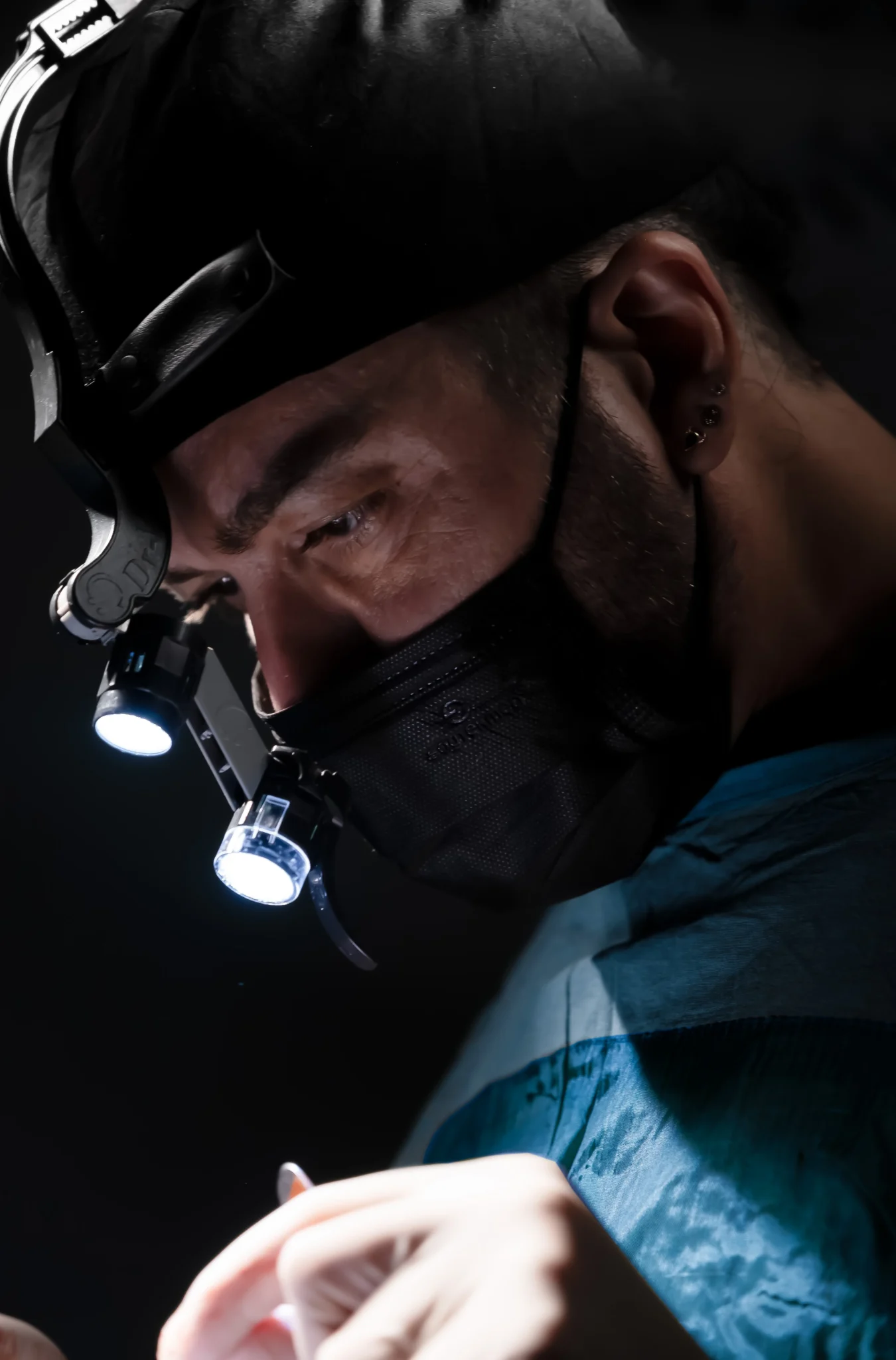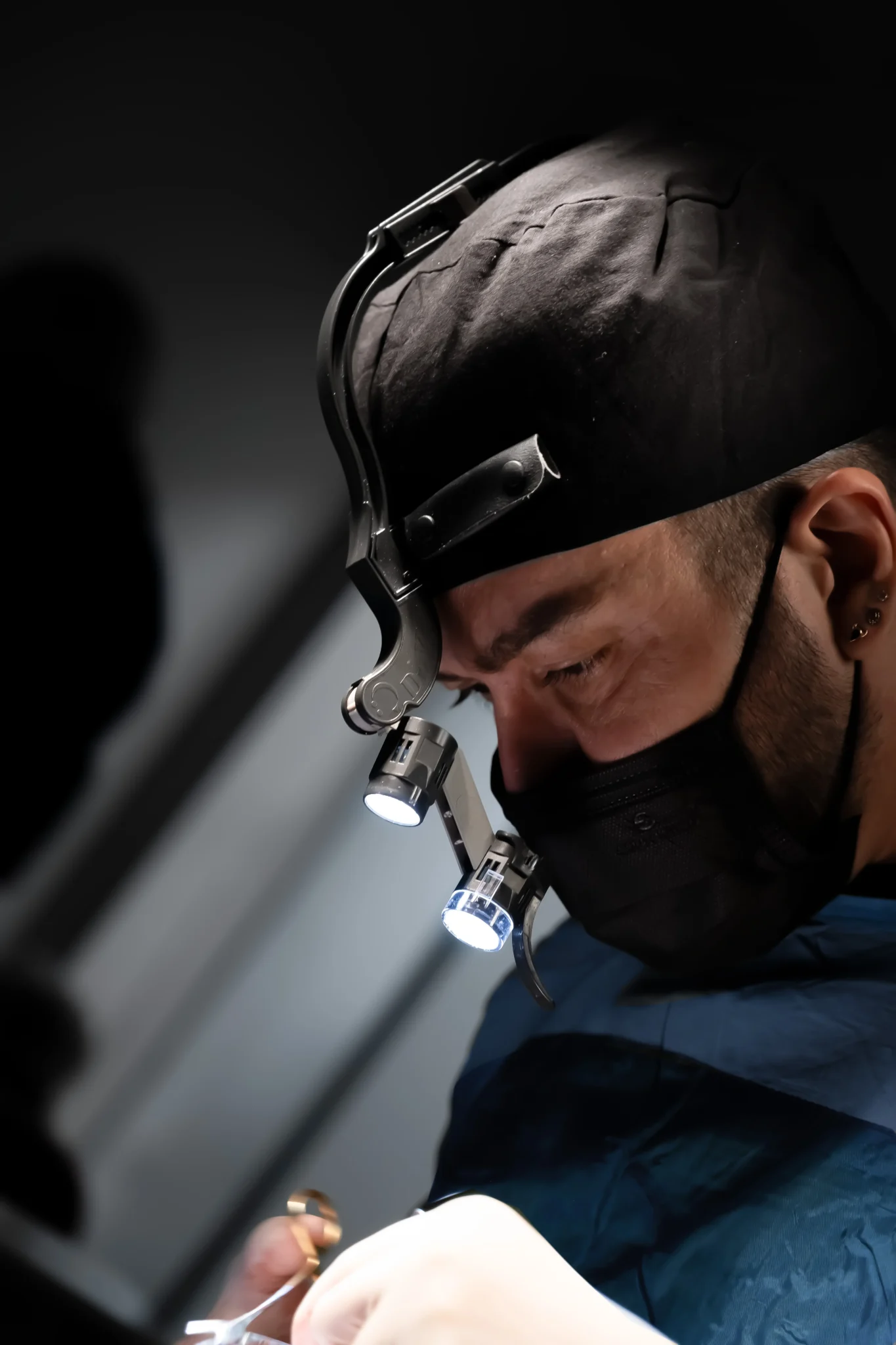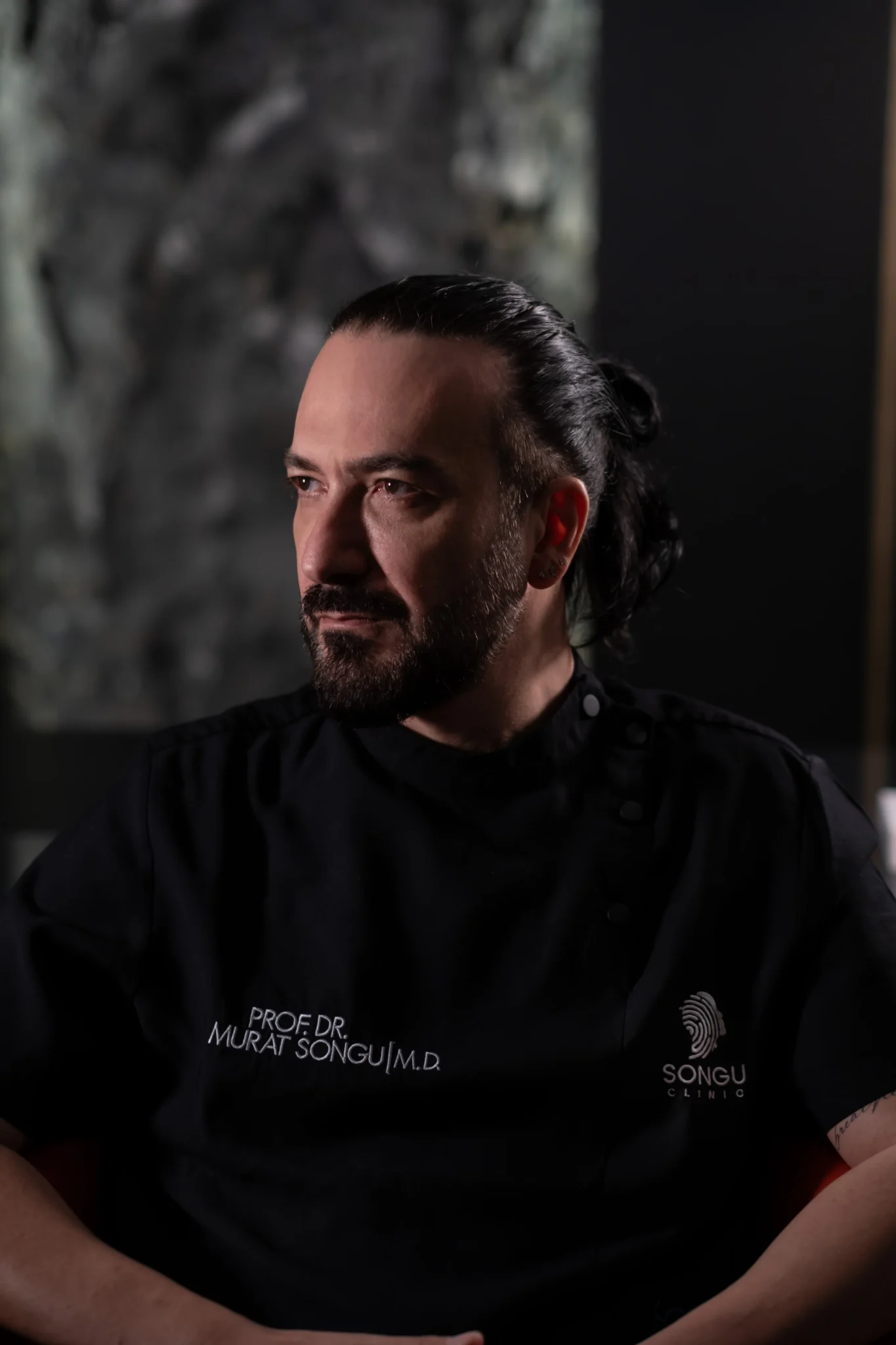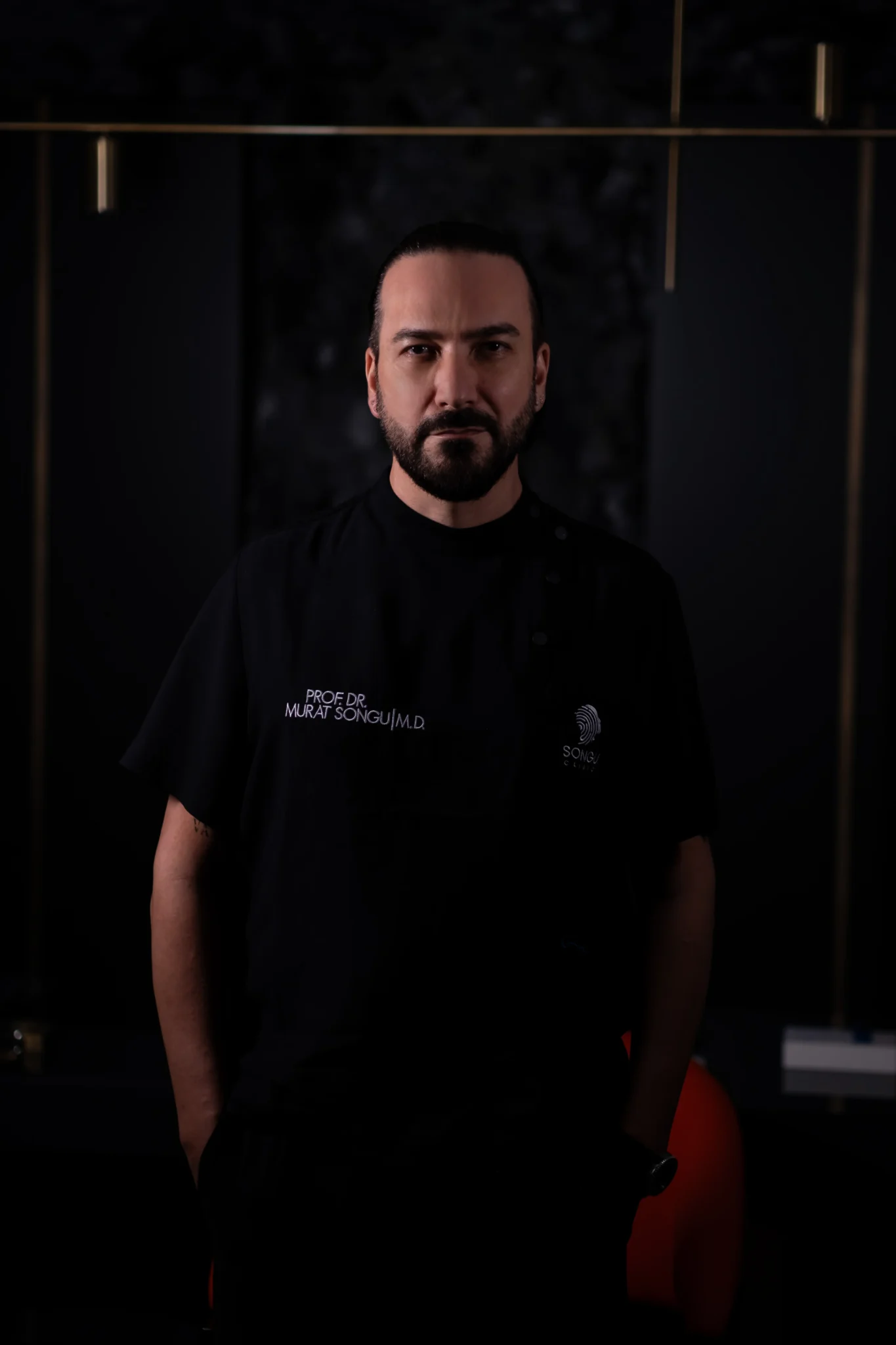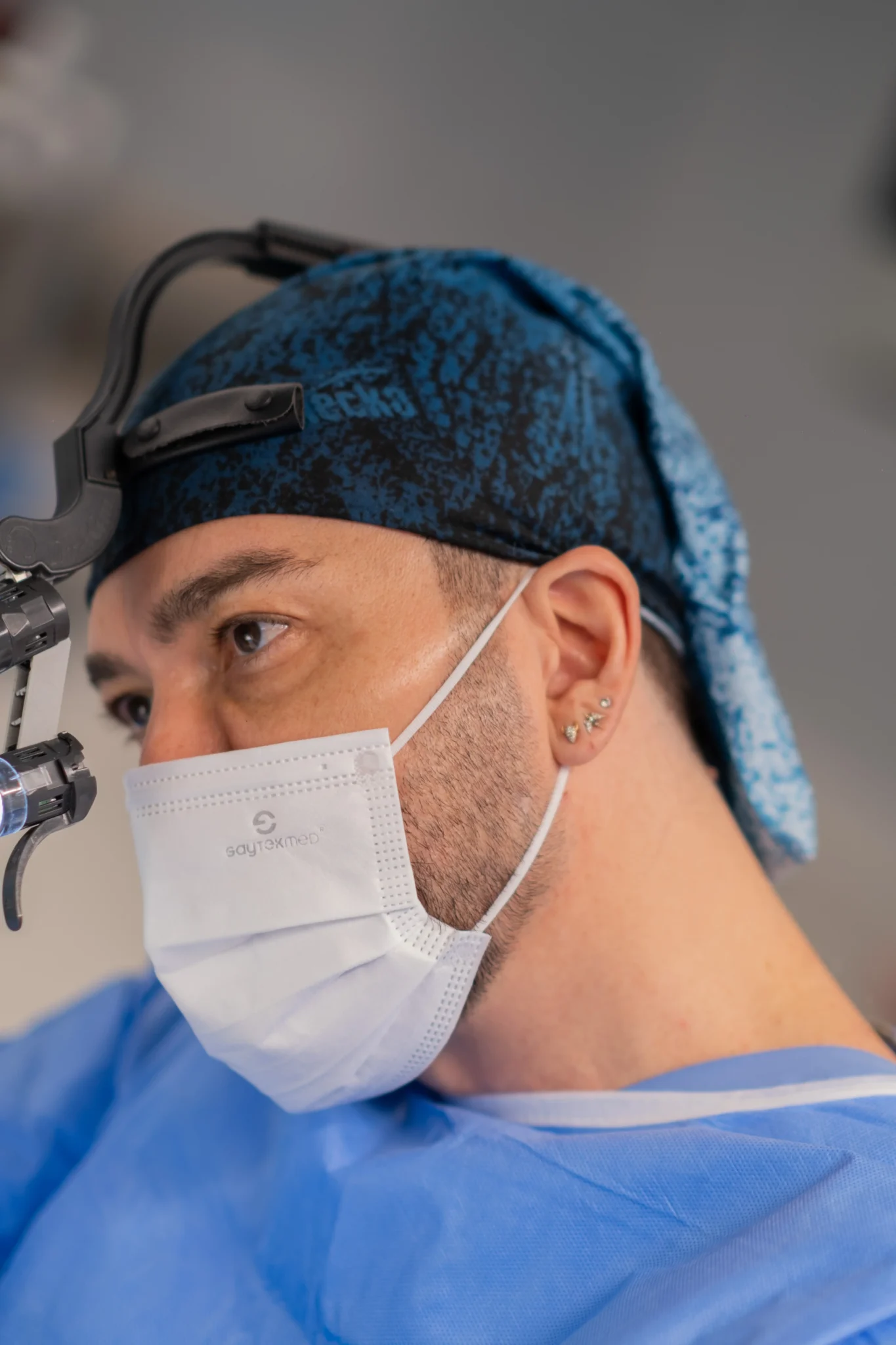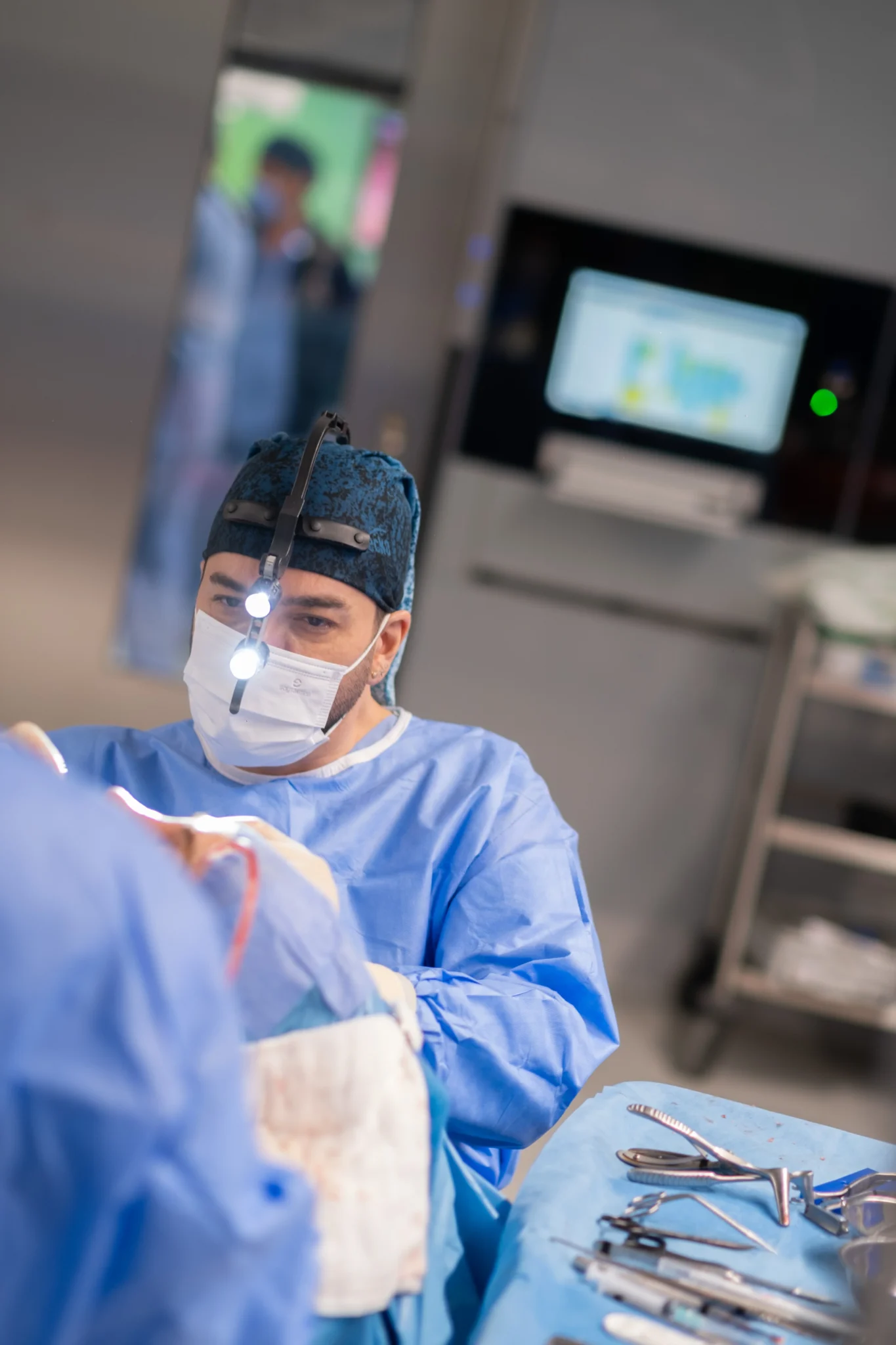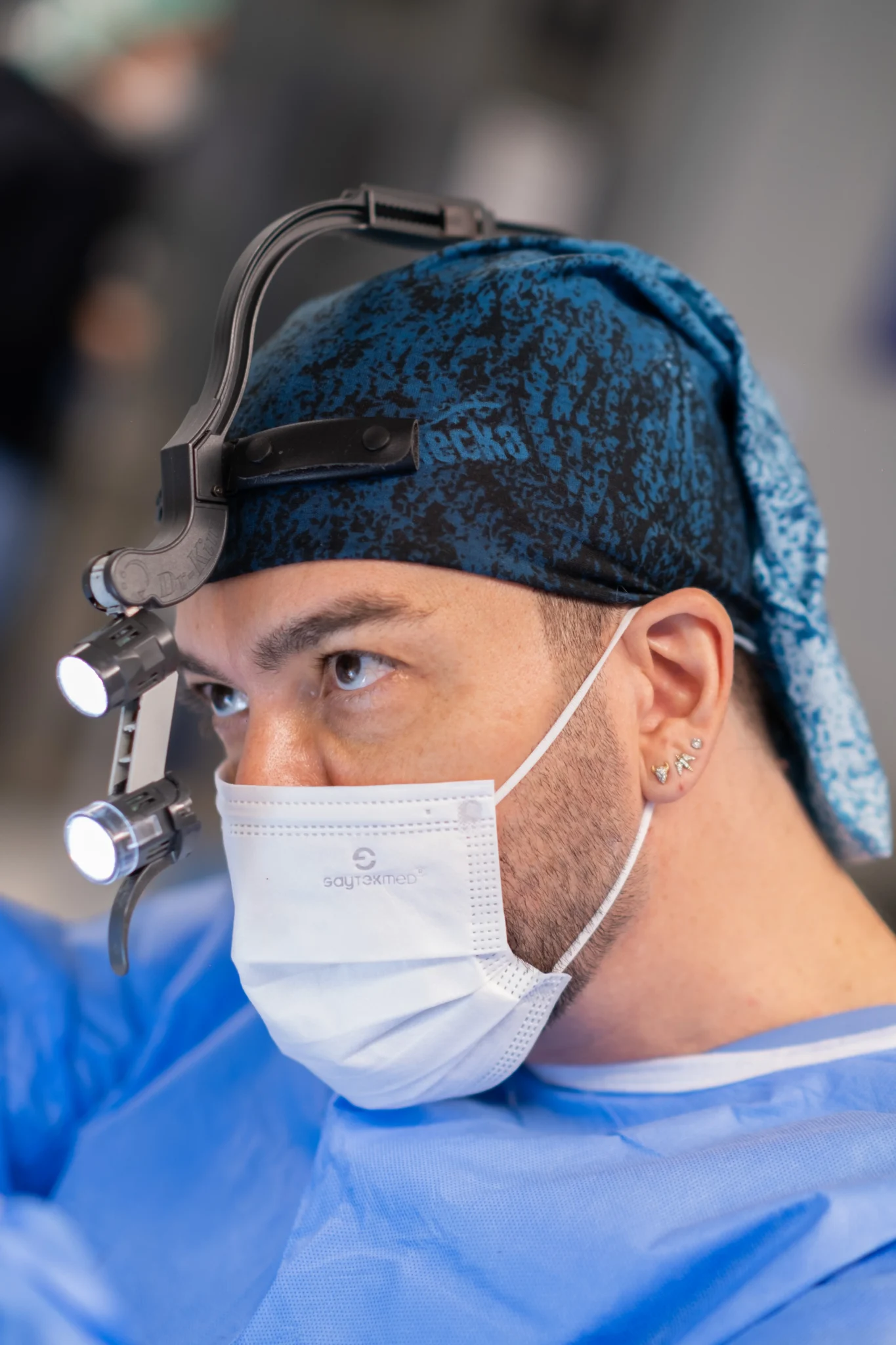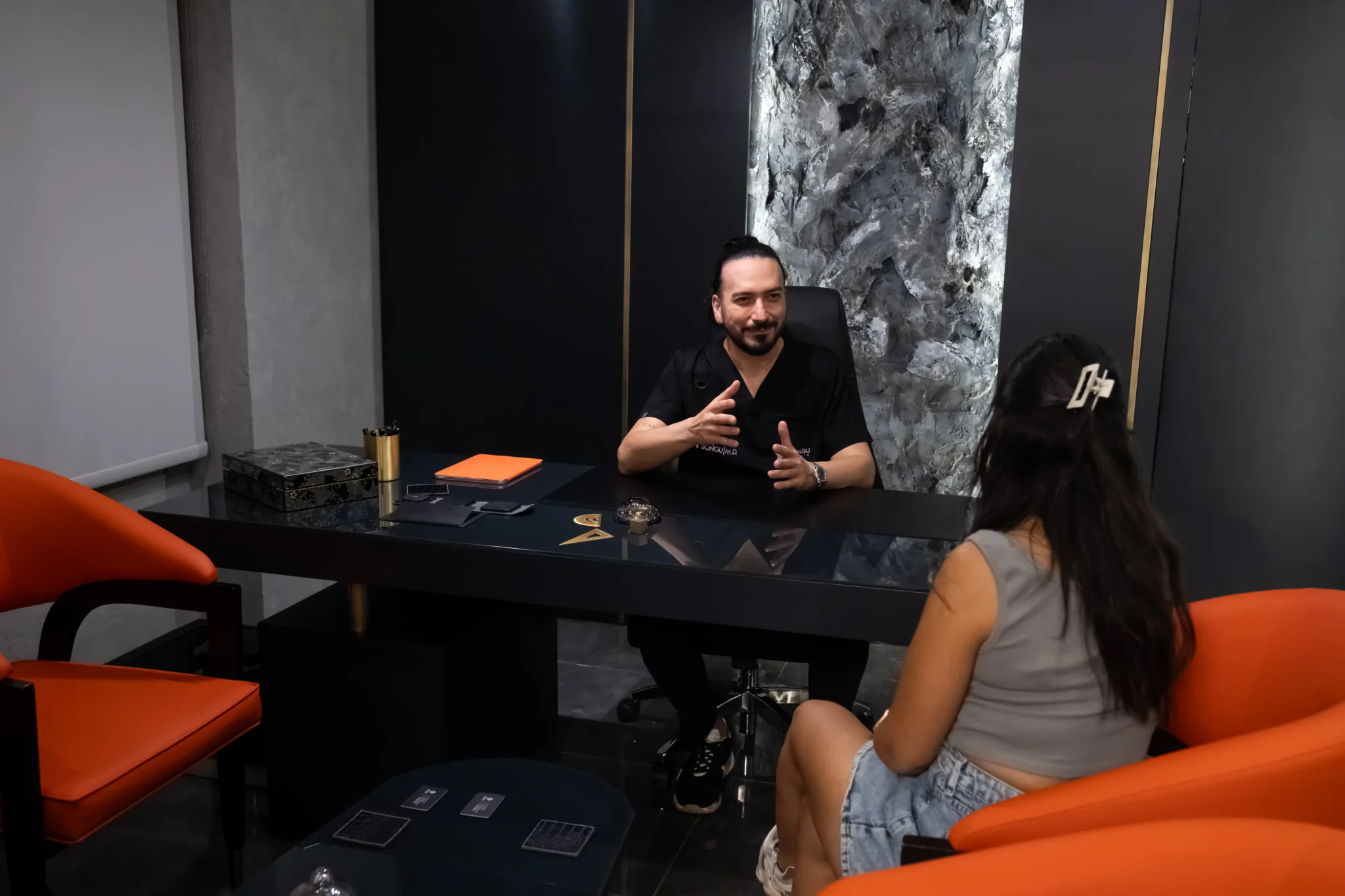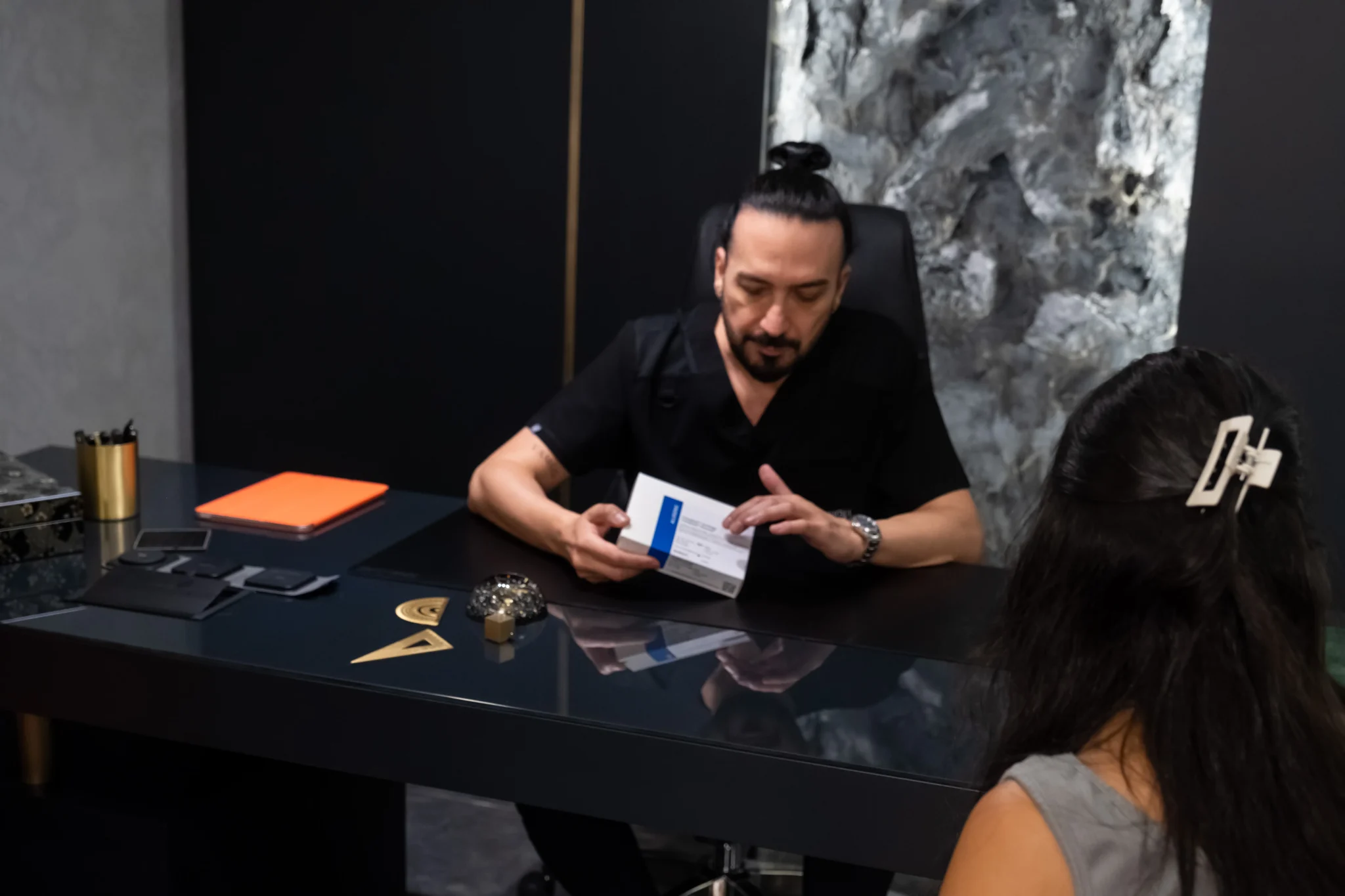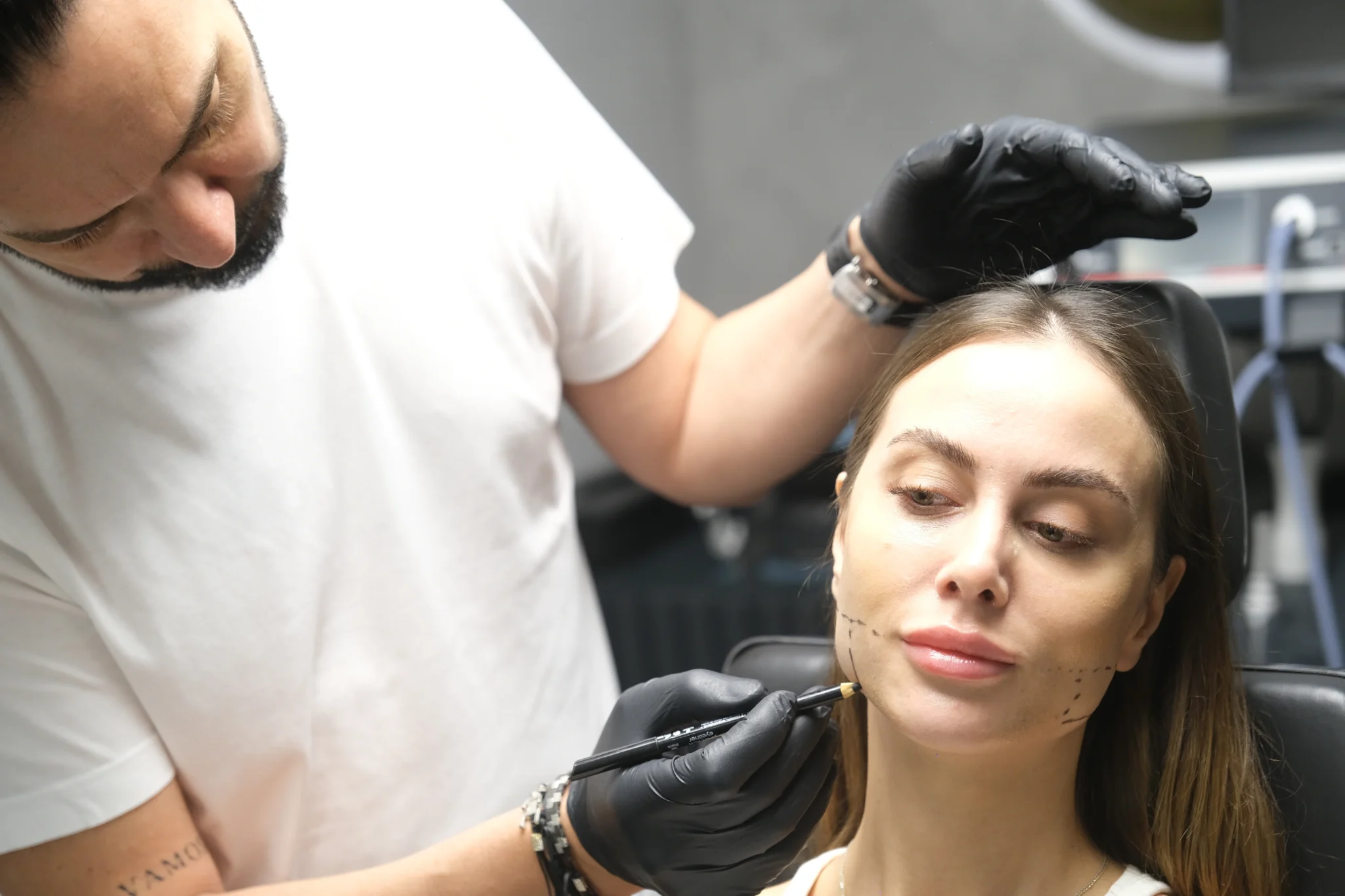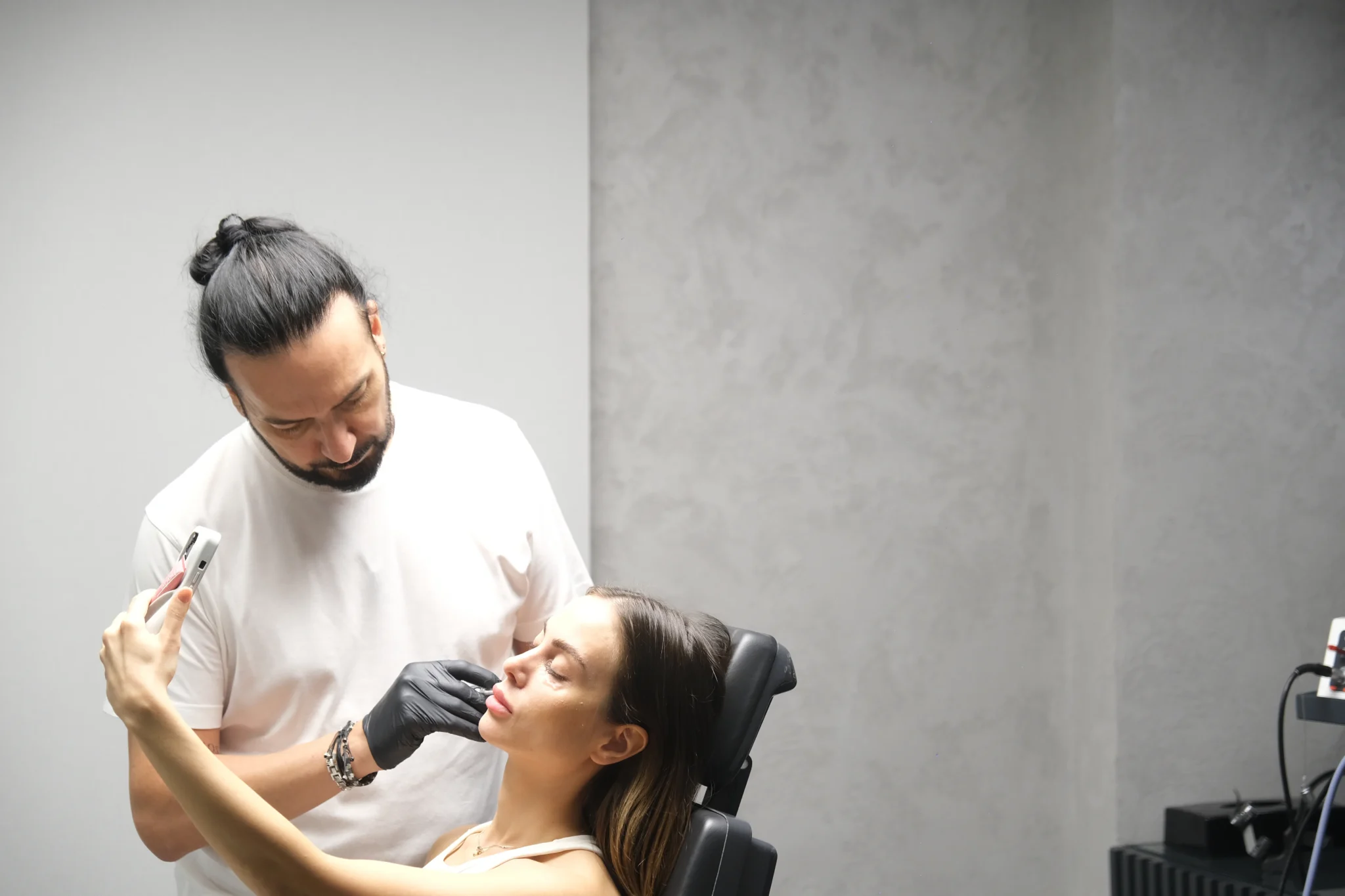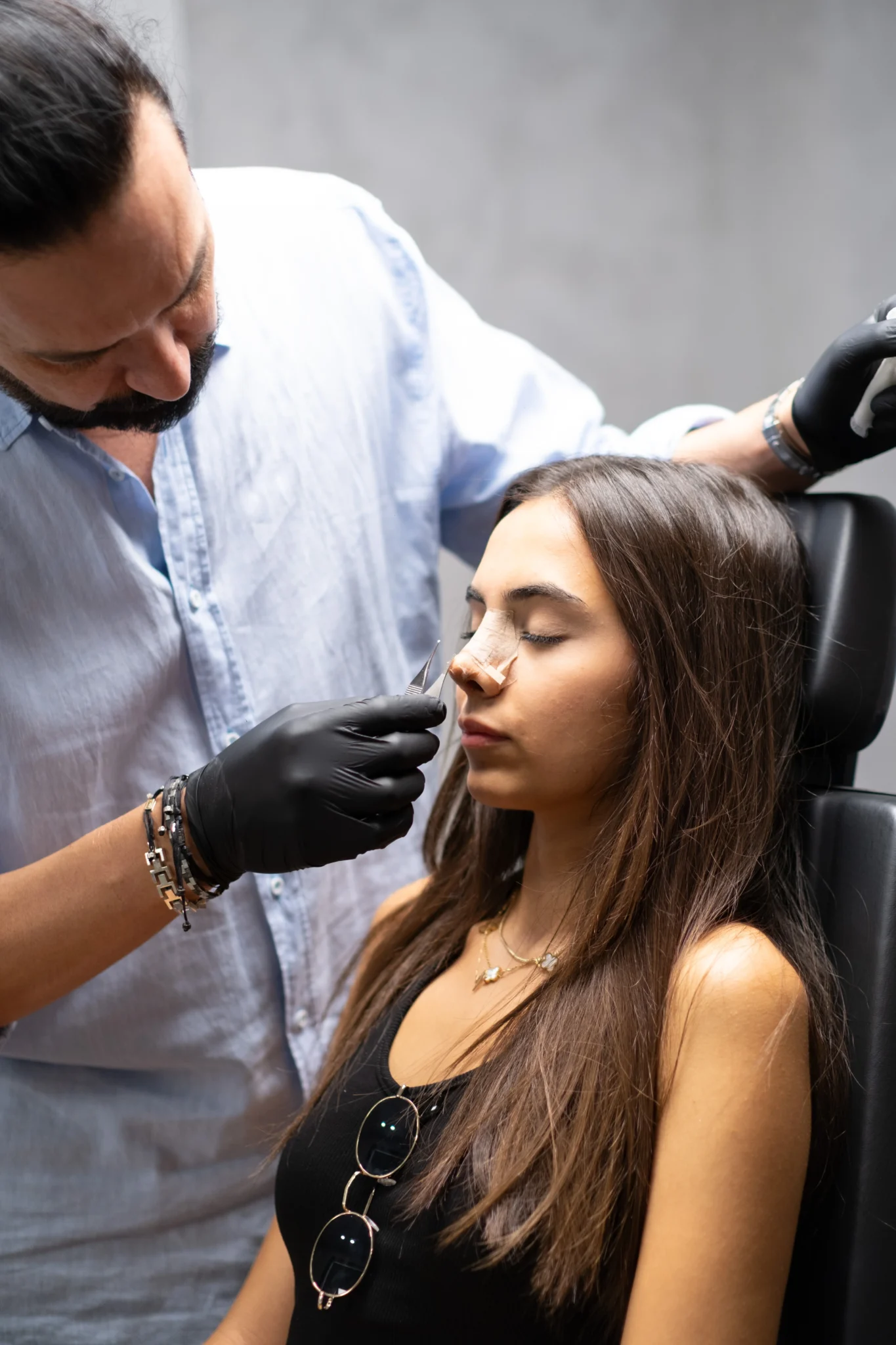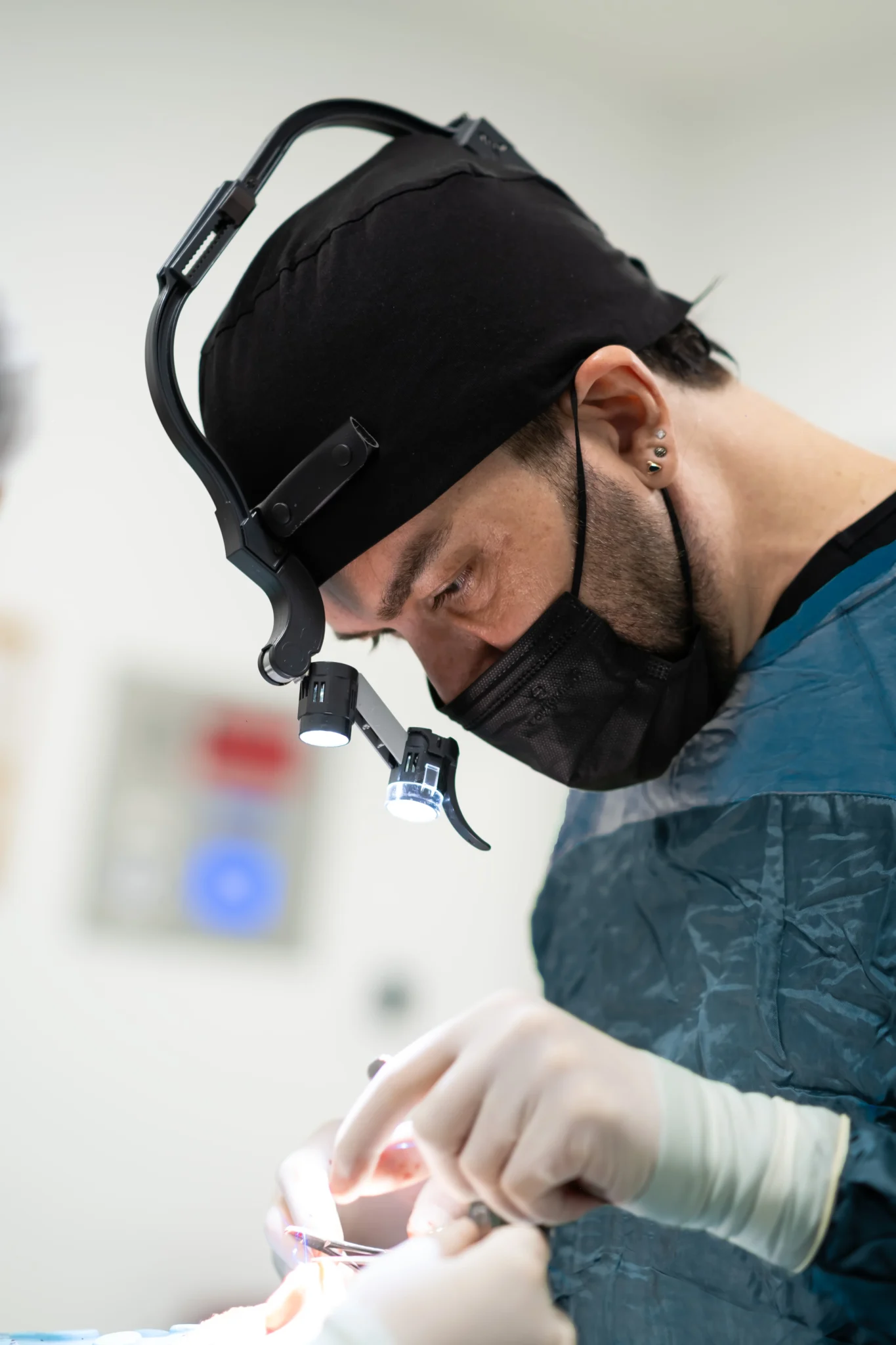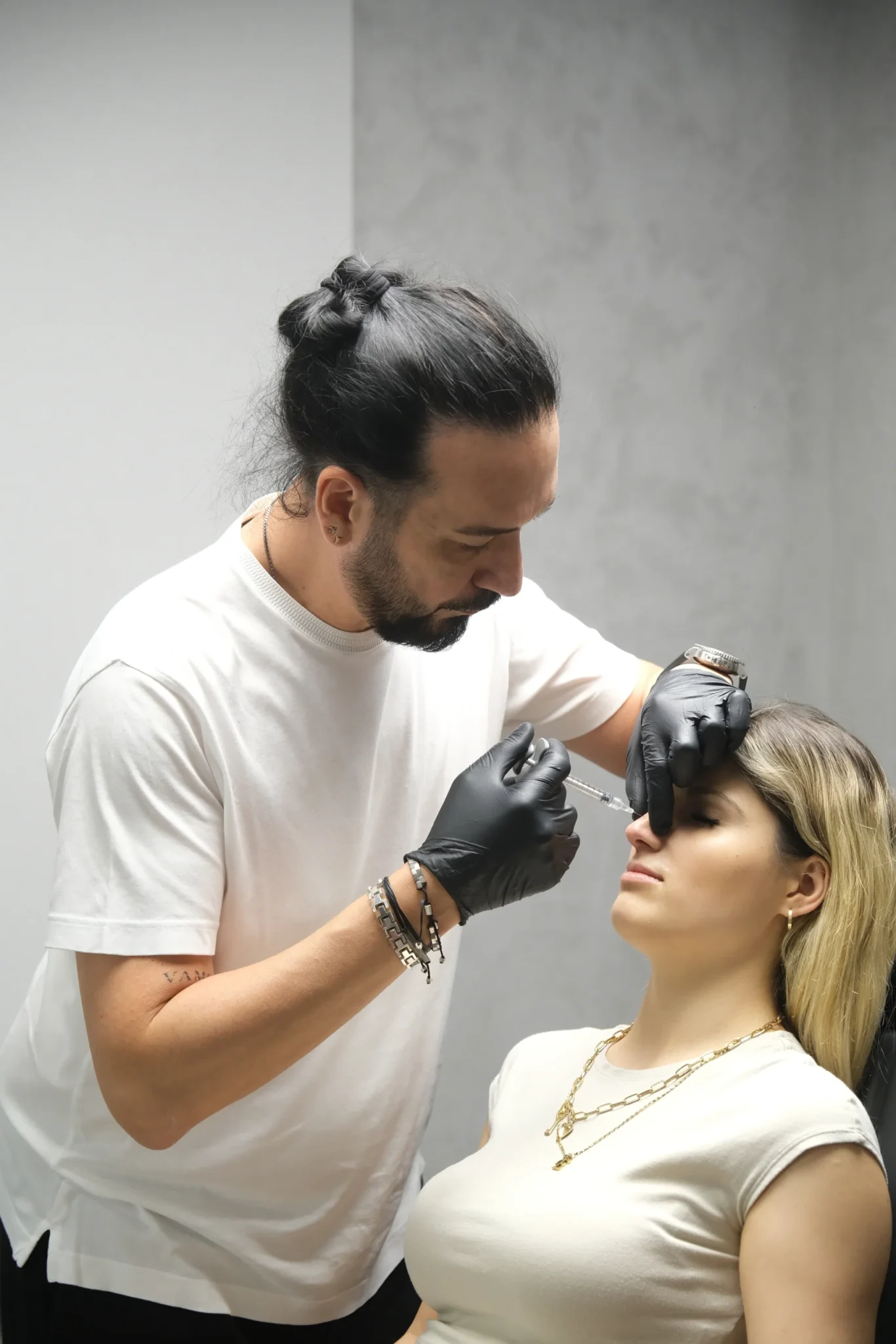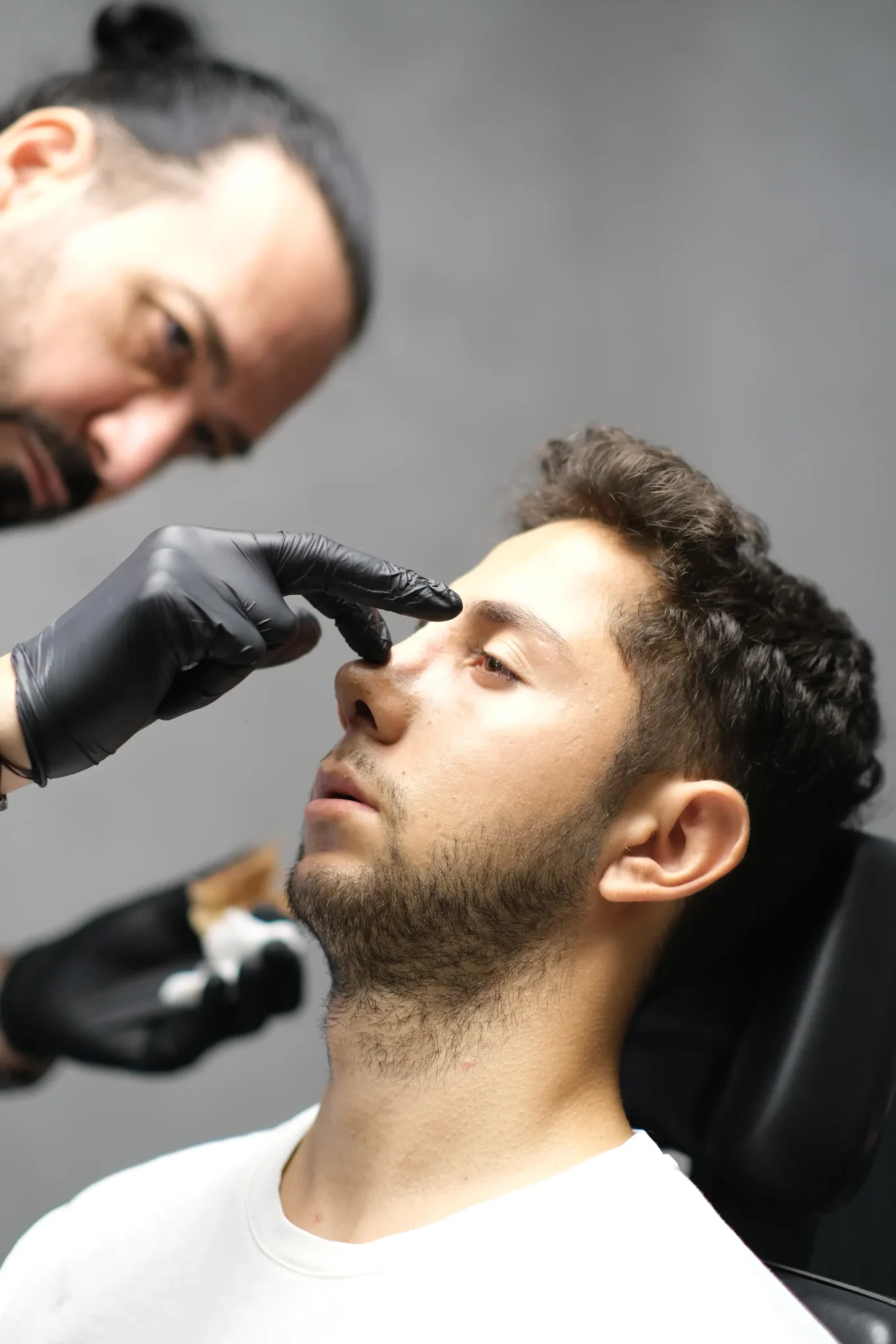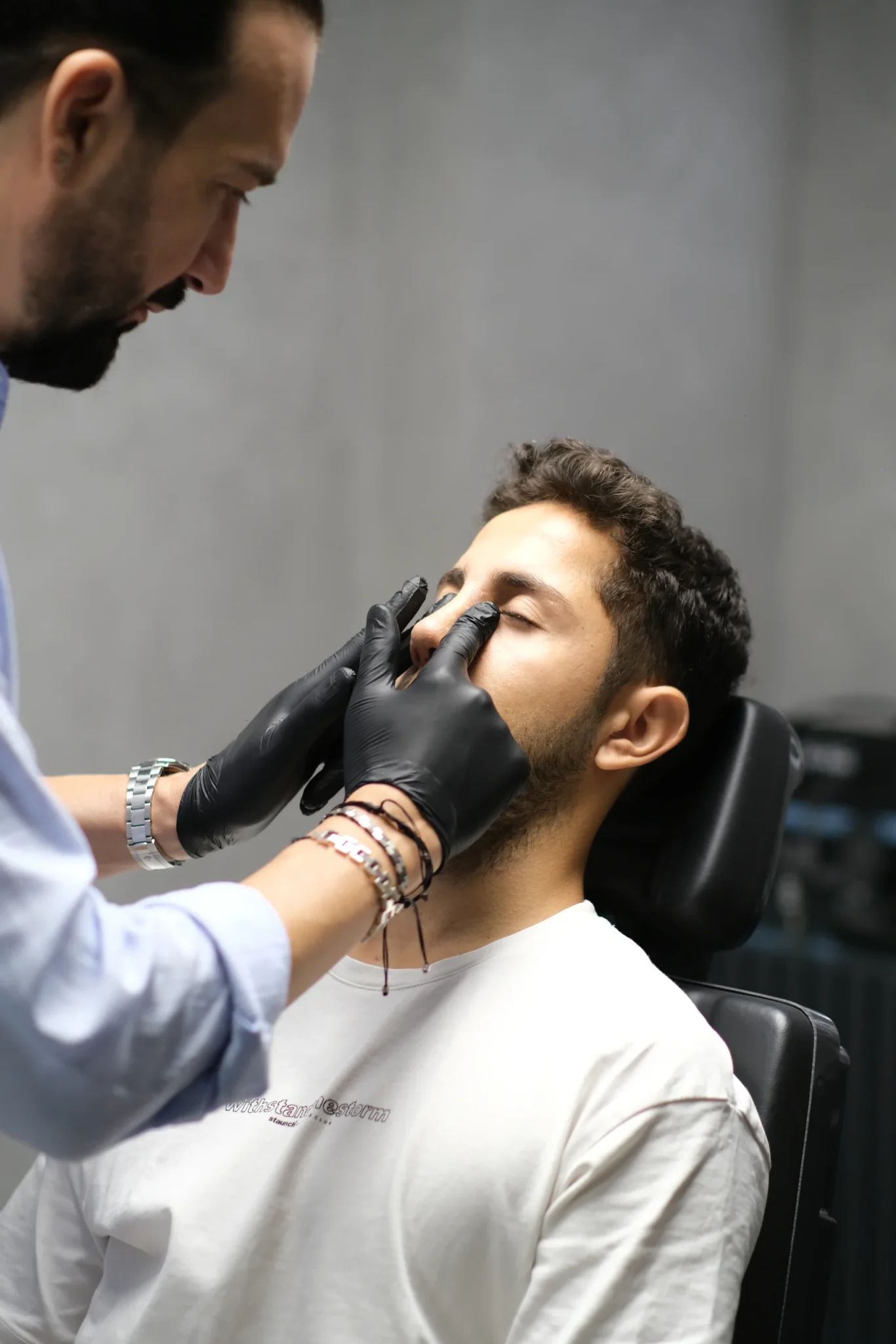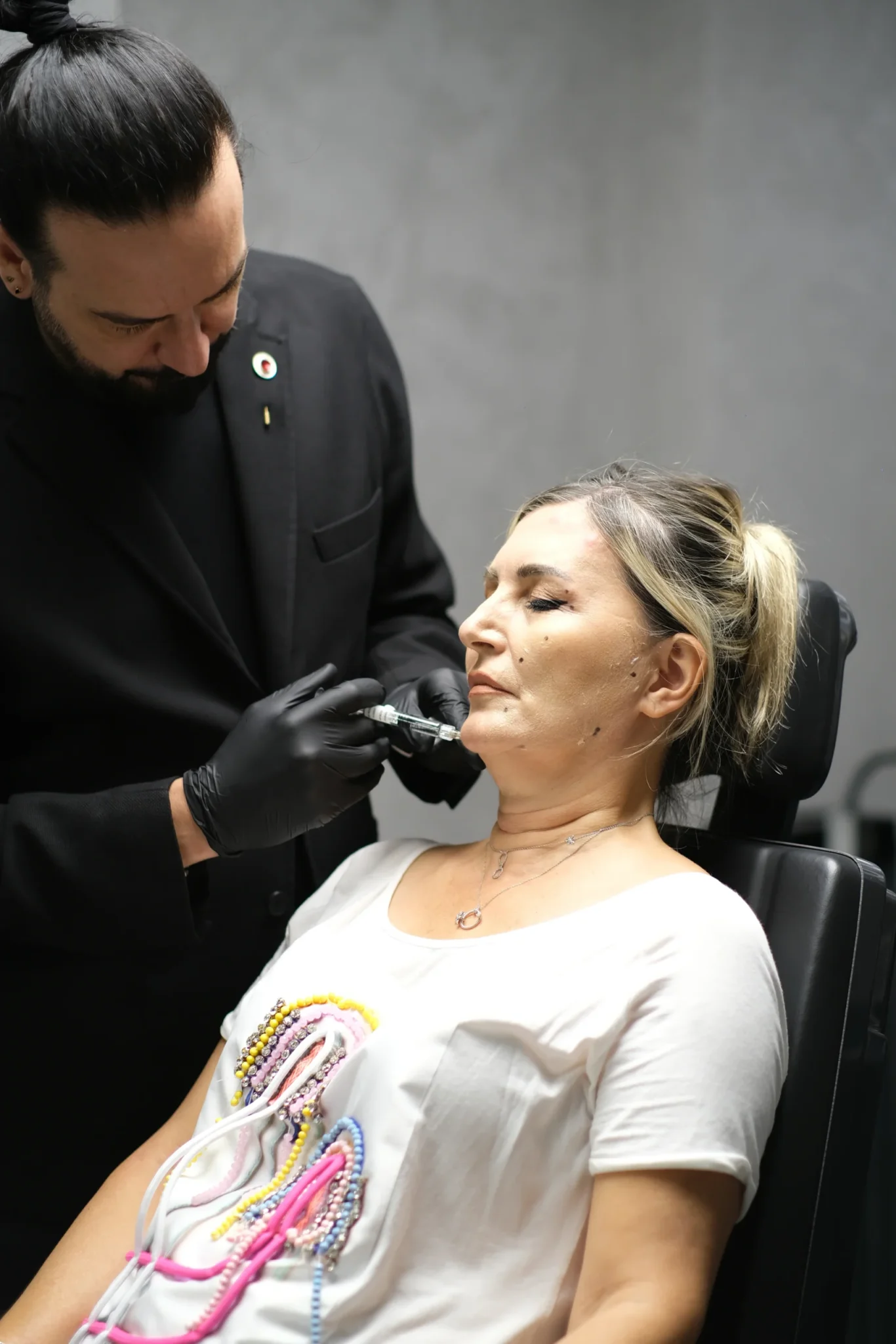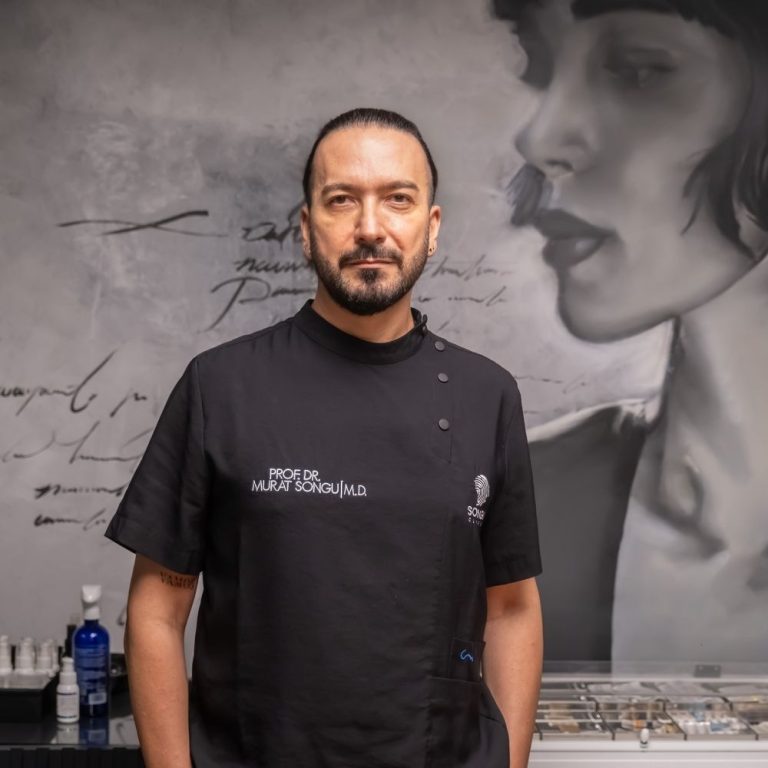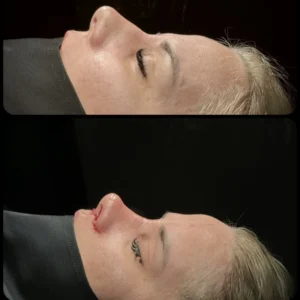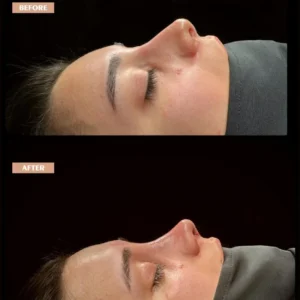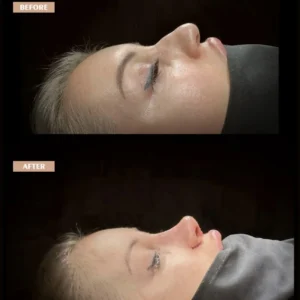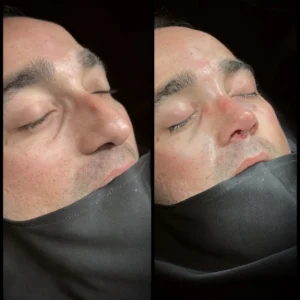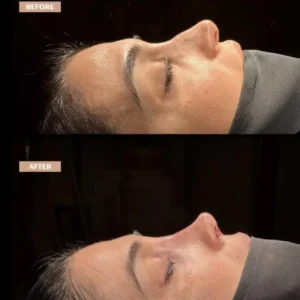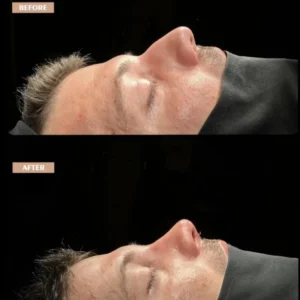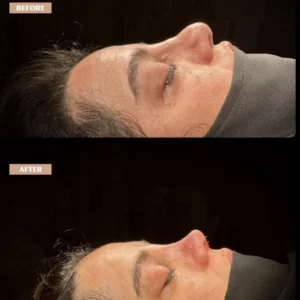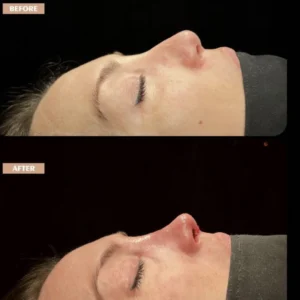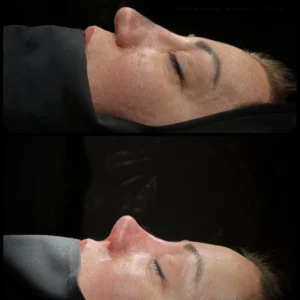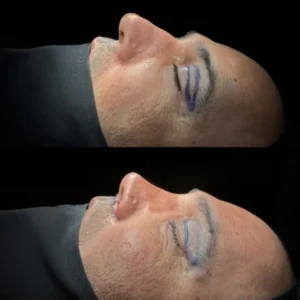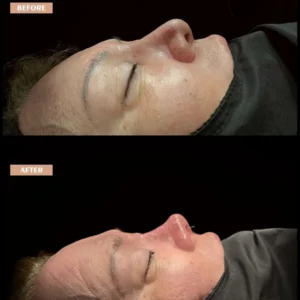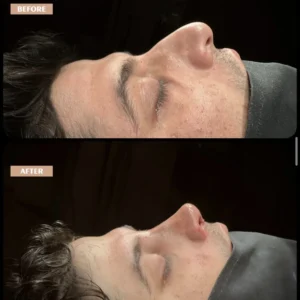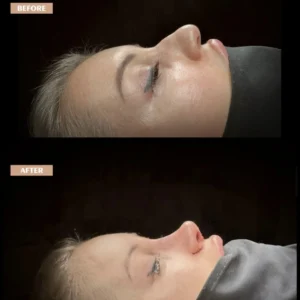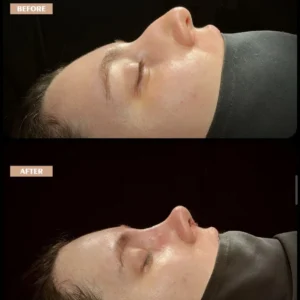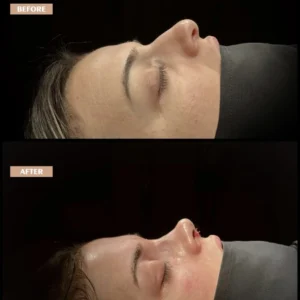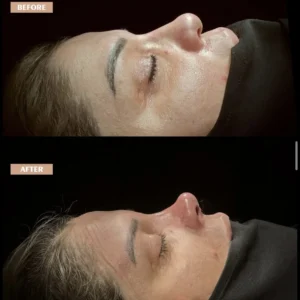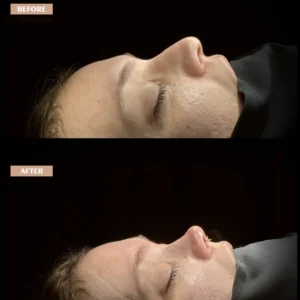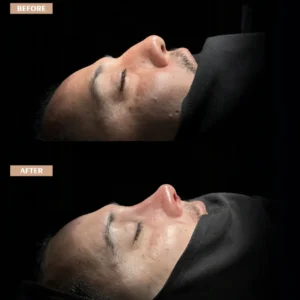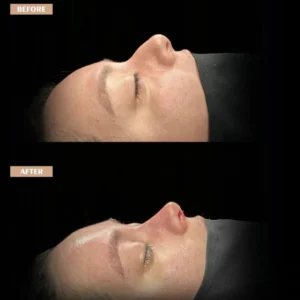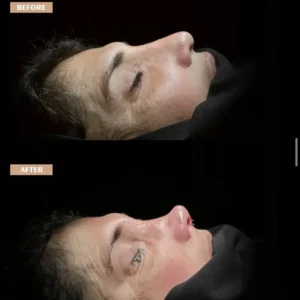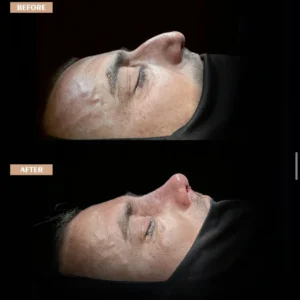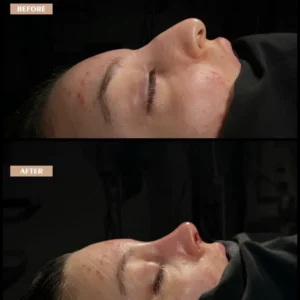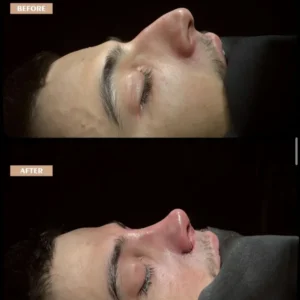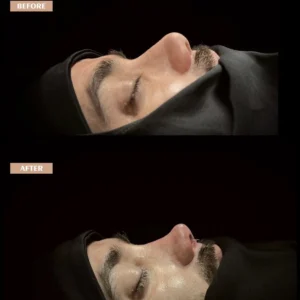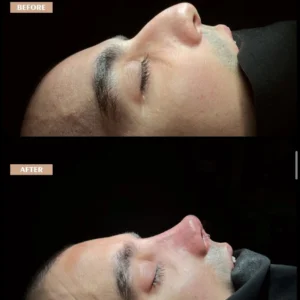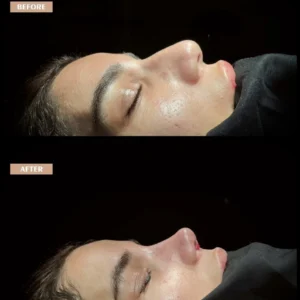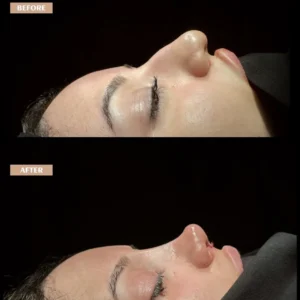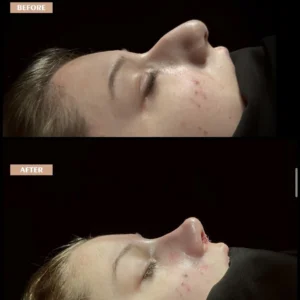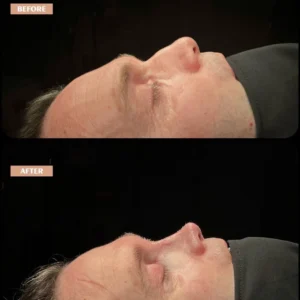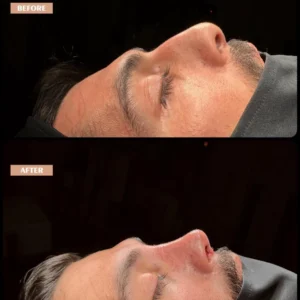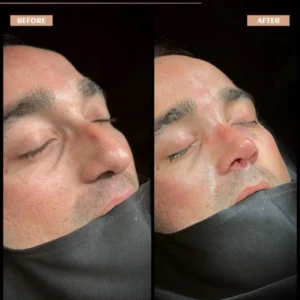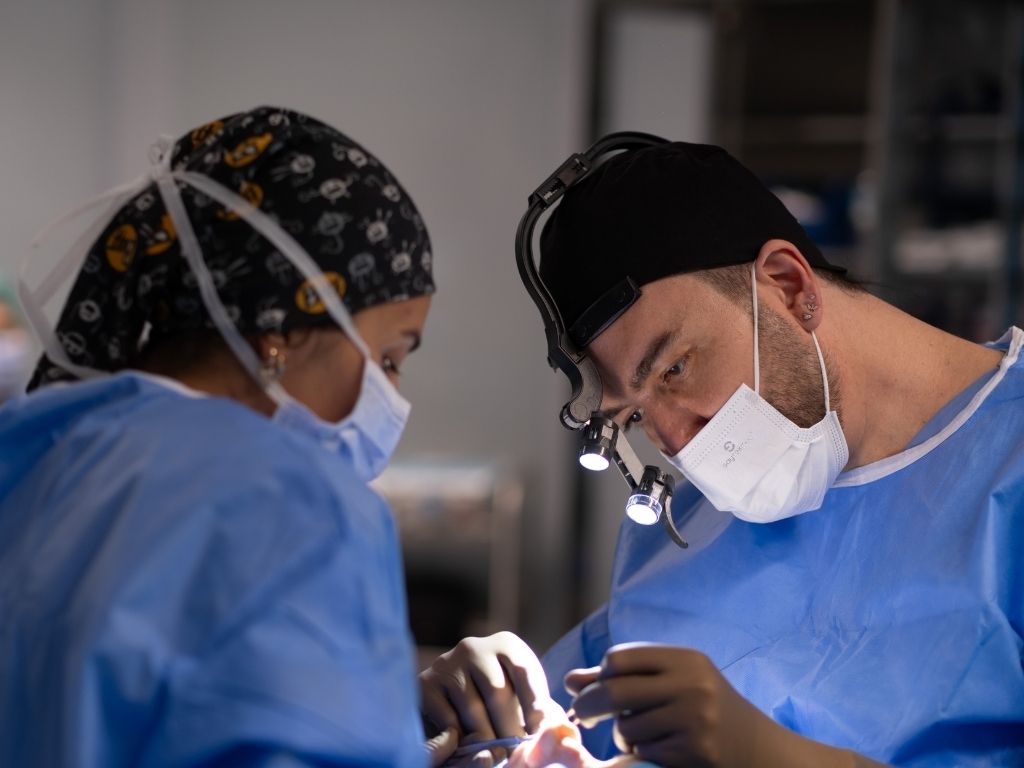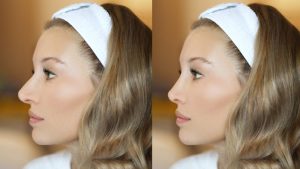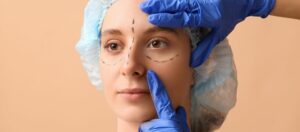
Preservation rhinoplasty in Turkey is a modern surgical technique that reshapes the nose while conserving the natural nasal structures as much as possible. Prof. Dr. Murat Songu applies this method to achieve functional improvement and aesthetic refinement with reduced trauma and faster healing compared to traditional approaches.
This technique is particularly suitable for patients who want a more natural appearance, as it maintains the integrity of the nasal dorsum and cartilage. By preserving key anatomical structures, preservation rhinoplasty ensures stable, long-lasting results with minimal risk of complications.
The cost of preservation rhinoplasty in Turkey starts from 5,000 EURO, depending on the complexity of the surgery and patient-specific needs. The package generally includes consultation, anesthesia, the surgical procedure, and comprehensive follow-up care for optimal outcomes.
Recovery after preservation rhinoplasty is typically quicker than conventional methods. Most patients return to daily activities within a week, with less swelling and bruising, and the final results become visible within a few months, offering natural and satisfying outcomes.

Turkey's Rhinoplasty Doctor
Prof. Dr. Murat Songu
Revision Rhinoplasty Specialist
Born in İzmir in 1976, Prof. Dr. Murat Songu entered İzmir Atatürk High School and then, in 1994, started at Ege University Faculty of Medicine. He completed his specialty training in Ear, Nose, and Throat Diseases at Celal Bayar University. In 2005, he worked on rhinology and otologic surgery in Bordeaux, France, at St. Augustin Clinic with Dr. Guy Lacher and at Bordeaux University with Prof. Vincent Darrouzet.
İçindekiler
One of the Best Surgeons for Preservation Rhinoplasty in Turkey
Prof. Dr. Murat Songu is recognized as one of the top surgeons for preservation rhinoplasty in Turkey, known for maintaining the integrity of the nasal structures while subtly enhancing shape. This modern technique supports quicker healing, natural results, and minimized post-operative trauma.
What is Preservation Rhinoplasty?
Preservation Rhinoplasty is a surgical technique used in the field of nose aesthetics. This technique aims to achieve excellent results by preserving the cartilage and bone structure of the nose. Below are some explanations about Preservation Rhinoplasty:
- Preservation Rhinoplasty preserves the anatomical structure of the nose and minimizes the risk of deformation.
- In this technique, the importance of tissues called perichondrium and periosteum, which protect the nasal bones and cartilage, is emphasized.
- During the surgery, there is minimal intervention to the nasal structure, resulting in natural and harmonious outcomes.
- Preservation Rhinoplasty is a different approach compared to other surgical techniques such as open, closed, classical, and structural rhinoplasty.
- The postoperative recovery process is usually fast, and patients can return to their daily activities and social life shortly after surgery.
- Pain, swelling, and edema are usually minimal and subside quickly.
- There are no incision scars on the nasal tip, and the risk of irregularities on the nasal dorsum is reduced.
- Preservation Rhinoplasty can be applied to patients with different nasal shapes and issues, resulting in natural-looking outcomes.
These points explain the general features and basic principles of Preservation Rhinoplasty. After an evaluation by an expert surgeon, the most suitable treatment option should be determined for each patient.
Before & After Gallery
How is Preservation Rhinoplasty Performed?
Preservation Rhinoplasty is a surgical technique performed under general anesthesia. The procedure begins with incisions made inside the nose. Below are the steps of Preservation Rhinoplasty:
- Access to the inside of the nose is provided through incisions made from the inside.
- Necessary procedures are performed to correct the curvature of the septal cartilage in the midline of the nose.
- The cartilage of the nasal tip is straightened and shaped as desired.
- If there is a curvature or hump on the nasal dorsum, it is removed using a saw.
- A new natural nasal dorsum and tip are created.
- At the end of the surgery, tampons are placed inside and on the dorsum of the nose.
These steps cover the basic stages of Preservation Rhinoplasty surgery. Each step should be performed with the experience and knowledge of the surgeon. The surgery typically lasts between 2-3 hours. Postoperative mild pain, swelling, and edema may occur.
Patients can usually return to their daily activities by the 3rd day. Preservation Rhinoplasty offers natural and satisfactory results by preserving the nasal structure. It is important to discuss all the details with your surgeon before the surgery.
Postoperative Recovery Process of Preservation Rhinoplasty
The recovery process after Preservation Rhinoplasty can vary from patient to patient. Generally, patients can return to their daily activities by the 3rd day after surgery. The recovery process can be summarized as follows:
- Swelling and edema: Mild swelling and edema are normal in the postoperative period. This condition usually decreases within the first few weeks.
- Pain: There may be minimal pain after the surgery. In this case, pain can usually be controlled with painkillers.
- Nasal tampons: Nasal tampons may be placed after the surgery. These tampons help control bleeding and maintain the shape of the nose. Tampons are usually removed after a few days.
- Nasal splint: A nasal splint may be applied after the surgery. The splint supports the correct positioning and healing of the nasal structure. It may need to be worn for several weeks.
- Scars: In Preservation Rhinoplasty, there are no visible incision scars, which is an advantage. However, mild bruising and small crusts may be seen in the postoperative period. These heal over time.
- Full recovery: The full recovery process varies from person to person but usually takes a few months. It is important to be patient for the results to fully appear.
A careful recovery process is required after Preservation Rhinoplasty surgery. Following your doctor’s instructions, attending regular check-ups, and adhering to recommended care guidelines are crucial for a successful recovery.
Advantages and Disadvantages of Preservation Rhinoplasty
Preservation Rhinoplasty is a surgical technique that brings several advantages.
Advantages of Preservation Rhinoplasty:
- Fast Recovery: Preservation Rhinoplasty offers a faster recovery process compared to other techniques. Patients can usually return to their daily activities and social life by the 3rd day after the surgery.
- Minimal Pain and Swelling: This technique is expected to result in minimal pain, edema, and swelling. This allows patients to have a more comfortable recovery process.
- No Visible Incision Scars: Preservation Rhinoplasty does not leave any incision scars on the nasal tip. Thus, the risk of encountering an aesthetic issue after surgery is minimized.
- Natural Nasal Mobility: The protective methods used in this technique ensure that the nasal tip remains very mobile. Problems like a stiff or unnatural nose seen in other techniques do not occur.
- Preservation of Ligaments: Preservation Rhinoplasty ensures the protection of nasal ligaments. This prevents unwanted outcomes such as nasal tip drooping.
As for disadvantages, there are no known disadvantages associated with this technique. However, the number of expert surgeons who can skillfully perform this technique may be limited worldwide. Therefore, it is important for patients considering this surgery to work with an experienced surgeon.
What Factors Influence the Cost of Preservation Rhinoplasty?
The cost of Preservation Rhinoplasty varies depending on several factors. Here are some factors that influence these prices:
- Surgeon’s Experience and Expertise: The fee charged by an experienced and successful surgeon is generally higher than that of those with less experience.
- Choice of Clinic or Hospital: Different clinics or hospitals may have different pricing policies. More comprehensive services at high-end facilities generally come with a higher cost.
- Complexity of the Surgery: The complexity, duration, and techniques of the rhinoplasty surgery can affect the cost. Particularly more challenging and detailed procedures may require more time and specialists.
- Location: The geographical location of the surgery also influences the prices. Different regions have varying living costs and medical service pricing, leading to differences in rhinoplasty costs.
- Additional Services: Postoperative follow-up and support, anesthesia, laboratory tests, and other additional services can affect the prices.
The cost of Preservation Rhinoplasty varies based on a combination of these factors. Each patient receives a customized pricing, and therefore it is important to contact a clinic or surgeon directly to learn the exact prices.
| Country | Average Preservation Rhinoplasty Cost (€) |
| United States | €16,000 – €32,000 |
| United Kingdom | €14,000 – €28,000 |
| Australia | €12,000 – €24,000 |
| Canada | €14,000 – €28,000 |
| Ireland | €13,000 – €26,000 |
| New Zealand | €11,000 – €22,000 |
| Turkey | €4,000 – €8,000 |
Latest Posts
Rhinoplasty Reviews in Turkey
Frequently Asked Questions
Who is Suitable for Preservation Rhinoplasty?
Preservation rhinoplasty is ideal for individuals who prioritize natural results. Those with low, thick, wide, or crooked nose structures can also benefit from this aesthetic method. Additionally, it is suitable for those who value the preservation of nasal functions. It is highly applicable to those without thick skin or a wide nasal base. This method balances both aesthetic and functional needs.
How Long Does Preservation Rhinoplasty Surgery Take?
The duration of preservation rhinoplasty surgery varies depending on the complexity of the procedures to be performed and the characteristics of the patient’s nasal structure. Generally, this type of operation takes between two to three hours. The duration of the operation also depends on the doctor’s experience and the techniques used. On the other hand, the patient’s recovery process does not affect this time. Therefore, the duration of the surgery may differ for each patient. It is important to have a detailed consultation with your doctor before the operation.
Is There Pain After Preservation Rhinoplasty?
Mild pain may occur after preservation rhinoplasty. This is generally considered normal and is not a cause for concern. These pains can be easily controlled with the help of pain relievers. The mild pain experienced after the operation should be seen as part of the treatment process. Patients may feel these pains at a minimal level, which allows them to return to their daily lives shortly. Therefore, pain after preservation rhinoplasty is an expected condition. These pains will gradually decrease and disappear over time.
Does Preservation Rhinoplasty Provide a Permanent Solution?
Preservation rhinoplasty is noted for providing a permanent solution. This method is designed to harmonize with the patient’s facial features. During the procedure, doctors make changes while preserving the nasal structure. Thus, it is possible to maintain the shape of the nose in the postoperative period. Additionally, this technique ensures a faster and smoother recovery process. The preservation of nasal functions is particularly prioritized. As a result, preservation rhinoplasty offers satisfactory long-term results.
What Nasal Problems Can Be Corrected with Preservation Rhinoplasty?
Preservation rhinoplasty offers solutions to many nasal problems. Firstly, minor nasal hump issues can be addressed. Additionally, nasal tip drooping and width are among the main problems that can be corrected. Furthermore, nasal deviation and wide nostrils can also be treated with this method. Lastly, the width of the nasal wings is another issue frequently resolved with aesthetic interventions. This treatment provides aesthetic improvements without damaging the patient’s facial structure.
Are Tampons Used After Preservation Rhinoplasty?
The use of tampons after preservation rhinoplasty is a frequently asked question. Generally, silicone tampons may be preferred in such operations to minimize the risk of bleeding. Silicone tampons provide a comfortable recovery process. Additionally, these tampons protect the nasal structures, reducing discomfort after the operation. Patients can experience a more peaceful recovery period. This application is determined by the doctor’s recommendation.
Are Stitches Removed After Preservation Rhinoplasty?
One of the most common questions patients have after preservation rhinoplasty is when the stitches will be removed. However, self-dissolving stitches are used in preservation rhinoplasty. Therefore, there is no need for stitch removal.

